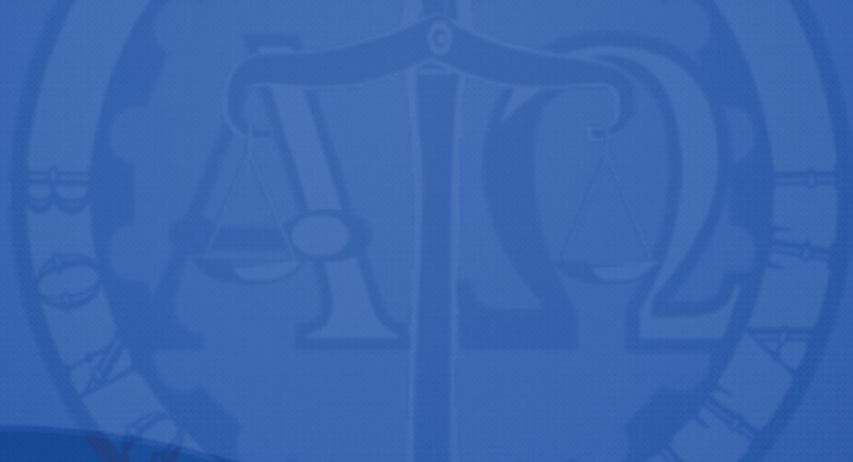Institutional concepts of savings for low-income households
Abstract
The main objective of the present article is to present theoretical arguments supporting the following research thesis: “Without institutional support low-income households will not be able to accomplish their short and long-term saving goals due to the specific financial situation”. The article is of both methodical and review character. The critical review of international and domestic sources was applied to answer the research question. Conclusions indicate key institutional criteria which need to be met to support low-income households in their saving objectives.
Keywords:
Households finance, financial choices, institutional saving models, financial tools, behavioural public policyReferences
Ajzen, I., & Fishbein, M. (1980). Understanding attitudes and predicting social behavior. Englewood Cliffs: Prentice-Hall.
Akerlof, G., & Shiller, R. (2015). Phishing for Phools: The Economics of manipulation and Deception. New York: Princeton University Press.
Altman, M. (2012). Implications of Behavioral Economics for Financial Literacy and Public Policy. Journal of Socio-Economics, 41(5), 677-690. https://doi.org/10.1016/j.socec.2012.06.002
Antonides, G., & van Raaij, W. F. (2003). Zachowanie konsumenta. Podręcznik akademicki. Warszawa: PWN.
Atkinson, A., & Messy, F. A. (2012). Assessing Financial Literacy in 12 Countries An OECD Pilot Exercise. Netspar Discussion Papers, 10, 657-665. https://doi.org/10.2139/ssrn.1809679
Banerjee, A. V., & Duflo, E. (2011). Poor economics. London, GBR: Penguin Books.
Banerjee, A. V., & Mullainathan, S. (2010). The Shape of Temptation: Implications for the Economic Lives of the Poor. NBER Working Paper, 15973. Pobrano z: http://www.nber.org/papers/w15973 (20.02.2020). https://doi.org/10.3386/w15973
Bertrand, M., Mullainathan, S., & Shafir, E. (2006). Behavioral economics and marketing in aid of decision making among the poor. Journal of Public Policy & Marketing, 25(1), 8-25. https://doi.org/10.1509/jppm.25.1.8
Beverly, S. G., & Sherraden, M. (1999). Institutional determinants of saving: implications for low-income households and public policy. Journal of Socio-Economics, 28(4), 457-473. https://doi.org/10.1016/S1053–5357(99)00046–3
Białowąs, S. (2013). Zachowania oszczędnościowe w polskich gospodarstwach domowych. Postawy, determinanty, model. Poznań: Wydawnictwo Uniwersytetu Ekonomicznego w Poznaniu.
Bucher&Koenen, T., & Lusardi, A. (2011). Financial literacy and retirement planning in Germany. Journal of Pension Economics and Finance, 10(4), 565-584. https://doi.org/10.1017/S1474747211000485
Chetty, R., Looney, A., & Kroft, K. (2009). Salience and taxation: theory and evidence. American Economics Review, 99(4), 1145-1177. https://doi.org/10.1257/aer.99.4.1145
Choi, J. J., Laibson, D., & Madrian, B. C. (2011). $100 Bills on the Sidewalk: Suboptimal Investment in 401(k) Plans. The Review of Economics and Statistics, 93(3), 748-763. https://doi.org/10.1162/REST_a_00100
Collins, J. M. (2015). Paying for the Unexpected: Making the Case for a New Generation of Strategies to Boost Emergency Savings, Affording Contingencies, and Liquid Resources for Low-Income Families. W: J. M. Collins (Ed.), Fragile balance: emergency savings and liquid resources for low-income consumers (s. 1-16). New York: Palgrave MacMillan.
Cucinelli, D., Trivellato, P., & Zenga, A. (2019). Financial Literacy: The Role of the Local Context. The Journal of Consumer Affairs, 53(4), 1874-1919. https://doi.org/10.1111/joca.12270
Deaton, A. (1991). Saving and Liquidity Constraints. Econometrica, 59(5), 1221-1248. https://doi.org/10.2307/2938366
Drexler, A., Fischer, G., & Schoar, A. (2011). Keeping it Simple: Financial Literacy and Rules of Thumb. American Economic Journal: Applied Economics, 6(2), 1-31. https://doi.org/10.1257/app.6.2.1
Elster, J. (2000). Ulysses Unbound. Cambridge: Cambridge University Press.
Gorbachev, O. (2011). Did Household Consumption Become More Volatile? The American Economic Review, 101(5), 2248-2270. https://doi.org/10.1257/aer.101.5.2248
Grune-Yanoff, T., & Hertwig, R. (2015). Nudge Versus Boost: How Coherent Are Policy and Theory? Minds and Machines, 26(1-2), 169-183. https://doi.org/10.1007/s11023-015-9367-9
Halpern, D. (2015). Inside the Nudge Unit. How small changes can make a big difference. London: WH Allen.
Han, C. K., & Sherraden, M. (2009). Do institutions really matter for saving among low-income households? A comparative approach. Journal of Socio-Economics, 38(3), 475-483. https://doi.org/10.1016/j.socec.2008.07.002
Harasim, J. (red.). (2007). Oszczędzanie i inwestowanie indywidualne w Polsce. Katowice: PTE.
Harasim, J. (red.). (2010). Oszczędzanie i inwestowanie w teorii i praktyce. Katowice: PTE.
Iwanek, M., & Wilkin, J. (1997). Instytucje i instytucjonalizm w ekonomii. Warszawa: Wydawnictwo Uniwersytetu Warszawskiego.
Jarosz, M. (red.). (2008). Wykluczeni. Wymiar społeczny, materialny i etniczny. Warszawa: ISN PAN.
Johnson, E., & Sherraden, M. S. (2007). From Financial Literacy to Financial Capability among Youth. Journal of Sociology & Social Welfare, 34(3), 119-146.
Klapper, L., Lusardi, A., & Panos, G. A. (2013). Financial literacy and its consequences: Evidence from Russia during the financial crisis. Journal of Banking & Finance, 37, 3904-3923. https://doi.org/10.1016/j.jbankfin.2013.07.014
Kłopocka, A. (2018). Skłonność gospodarstw domowych do oszczędzania a wiedza finansowa. Bank i Kredyt, 49(5), 461-492.
Kochanowicz, J., Mandera, S., & Marody, M. (2007). Kulturowe aspekty transformacji ekonomicznej. Warszawa: Instytut Spraw Publicznych.
Lusardi, A., Schneider, D. L., & Tufano, P. (2011). Financially fragile households: evidence and implications. NBER Working Paper, 17072, 83-134. https://doi.org/10.3386/ w17072
Madrian, B., & Shea, D. (2001). The Power of Suggestion: Inertia in 401(k) Participation and Savings Behavior. Quarterly Journal of Economics, 116(4), 1149-1187. https://doi.org/10.1162/003355301753265543
Mullainathan, S. (2006). Better choices to reduce poverty. W: A. B. Banerjee, R. Benabou, & D. Mookherjee (Eds.), Understanding poverty (s. 379-288). Oxford: Oxford University Press.
Mullainathan, S. (2007). Psychology and Development Economics. W: P. Diamond, & H. Vartiainen (Eds.), Behavioral Economics and its Applications (s. 85-114). Princeton/Oxford: Princeton University Press.
Mullainathan, S., & Shafir, E. (2014). Scarcity. The true cost of not having enough. London: Penguin Books.
North, D. C. (1991). Institutions. The Journal of Economic Perspectives, 5(1), 97-112. https://doi.org/10.1257/jep.5.1.97
Rószkiewicz, M. (2004). Skłonność Polaków do oszczędzania w świetle finansów behawioralnych. Ekonomista, 5, 675-695.
Rószkiewicz, M. (2006). Attitudes Towards Saving in Polish Society During Transformation. Social Indicators Research, 78, 429-452. https://doi.org/10.1007/s11205-005-1605-8
Rószkiewicz, M. (2014). Objective and subjective factors shaping saving behaviours – the case of Polish households. International Journal of Consumer Studies, 38(6), 602-611. https://doi.org/10.1111/ijcs.12129
Schreiner, M., & Sherraden, M. (2007). Can the poor save? Savings and Asset Building in Individual Development Accounts. New York: Aldine de Gruyter.
Sen, A. (1987). On ethics and economics. Malden: Blackwell Publishing.
Sen, A. (1999). Development As Freedom. Oxford: Oxford University Press.
Shelling, T. (1984). Choice and consequences. Perspectives of an errant economist. Cambridge: Harvard University Press.
Sherraden, M. S. (2013). Building blocks of financial capability. W: J. M. Birkenmaier, M. S. Sherraden, & J. C. Curley (Eds.), Financial Capability and Asset Building: Research, Education, Policy, and Practice (s. 1-43). Oxford: Oxford University Press.
Sherraden, M. (1991). Assets and the Poor: A New American Welfare Policy. New York: M. E. Sharpe.
Sherraden, M., Schreiner, M., & Beverly, S. (2003). Income, institutions, and saving performance in individual development accounts. Economic Development Quarterly, 17(1), 95-112. https://doi.org/10.1177/0891242402239200
Shiller, R. J. (2005). Irrational Exuberance (second edition). New York, USA: Crown Business.
Shiller, R. J. (2010). How nutritious are your investments? Project Syndicate: A World of Ideas. Pobrane z: http://www.project-syndicate.org/commentary/shiller71/English (20.02.2020).
Shiller, R. J. (2012). Finance and the Good Society. Princeton/Oxford: Princeton University Press.
Son, J., & Park, J. (2017). Effects of financial education on sound personal finance in Korea: Conceptualization of mediation effects of financial literacy across income classes. International Journal of Consumer Studies, 43(1), 77-86. https://doi.org/10.1111/ijcs.12486
Thaler, R. H. (1990). Saving, fungibility, and mental accounts. Journal of Economic Perspectives, 4(1), 193-205. https://doi.org/10.1257/jep.4.1.193
Thaler, R. H. (1994). Psychology and saving policies. American Economic Review, 84(2), 186-192.
Thaler, R. H. (2000). From homo economicus to homo sapiens. Journal of Economic Perspectives, 14(1), 133-141. https://doi.org/10.1257/jep.14.1.133
Thaler, R., & Benartzi S. (2004). Save More Tomorrow: Using Behavioral Economics to Increase Employee Saving. Journal of Political Economy, 112(S1), 164-187. https://doi.org/10.1086/380085
Thaler, R., & Sunstein, C. (2003). Libertarian Paternalism. American Economic Review, 93(2), 175-179. https://doi.org/10.1257/00028280332194700
Thaler, R., & Sunstein, C. (2008). Nudge. Improving Decisions About Health, Wealth, and Happieness. London: Penguin Books.
Thaler, R. (2015). Misbehaving. How Economics Become Behavioural. London: Penguin Books.
Wilkin, J. (2016). Instytucjonalne i kulturowe podstawy gospodarowania. Warszawa: Wydawnictwo Naukowe Scholar.
Willis, L. E. (2011). Financial Education Fallacy. American Economics Review, 101(3), 429-434. https://doi.org/10.1257/aer.101.3.429
Xiao, J. J. (2008). Applying behavior theories to financial behavior. W: J. J. Xiao (Ed.), Handbook of consumer finance research (s. 69-81). New York: Springer.
License

This work is licensed under a Creative Commons Attribution 4.0 International License.
This work is licensed under a Creative Commons Attribution 4.0 International License.








